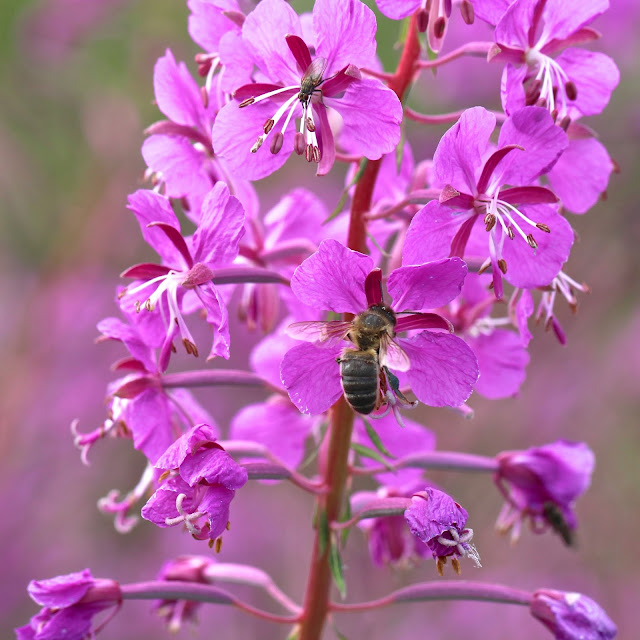This is borage (Borago offinicialis), a common annual herb and a favourite with bees, especially honey bees. The flowers are five pointed stars and are mostly blue
although some are pink.
I have noticed a lot of white pollen coming into the hives and wasn't sure where it was coming from until I looked closely at these bees. The various pollen colour charts I found online all say that borage pollen is blue/grey, without offering any evidence. However, borage pollen is clearly white.
It is fascinating to watch the bees collecting the pollen. They hang upside down and scrape the anthers with their legs. The pollen falls onto the abdomen before being collected with the pollen brushes on the back legs and packed into the pollen baskets. (The photos with a dark background are taken in daylight but with flash.)
The pollen looks creamy white by the time it is in the pollen baskets, especially in the flash photos.
I started by sowing borage seeds a few years ago but now it seeds itself all over the kitchen garden. The plants come up all summer so there are lots of flowers for the bees.
























